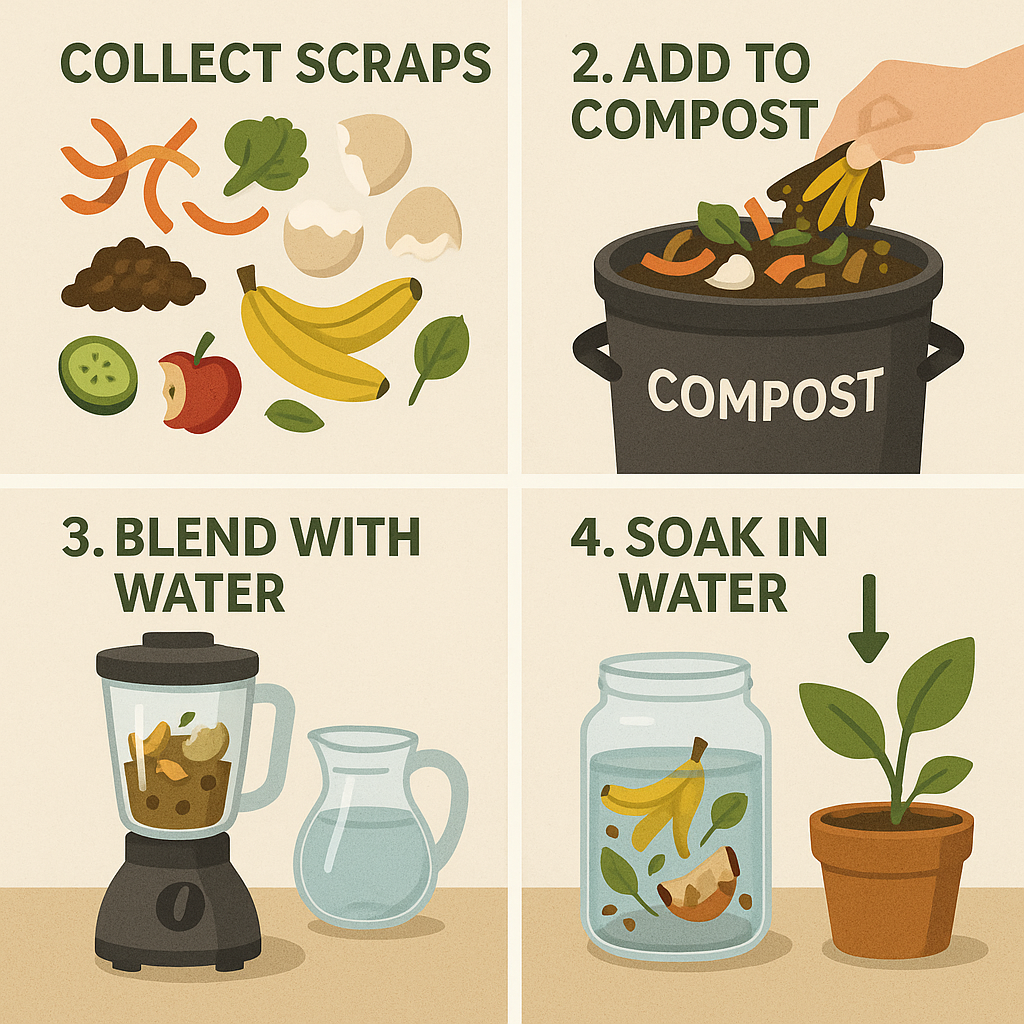If you’re looking for a sustainable and cost-effective way to nourish your garden, learning how to make natural fertilizers from kitchen scraps is an excellent place to start. Instead of throwing away food waste, you can turn it into nutrient-rich material that boosts plant growth and improves soil health—without synthetic chemicals.
Why Use Kitchen Scraps as Fertilizer?
Kitchen scraps are filled with organic matter that decomposes and releases essential nutrients like nitrogen, potassium, and phosphorus. When properly used, they help:
- Enrich soil structure
- Feed beneficial soil microbes
- Reduce household waste
- Eliminate the need for chemical fertilizers
Plus, most scraps are already part of your daily routine—no extra cost involved.
What Kitchen Scraps Can Be Used as Fertilizer?
Not all scraps are equal. Here are the most effective and safe options:
✅ Vegetable Peels
Carrot, potato, cucumber, and beet peels decompose quickly and add nutrients.
✅ Eggshells
Rich in calcium. Crush them to improve breakdown and support root development.
✅ Coffee Grounds
Add nitrogen and improve soil texture. Best for acid-loving plants like tomatoes and blueberries.
✅ Banana Peels
Provide potassium and phosphorus. Can be buried directly in soil or soaked in water.
✅ Tea Leaves
Used tea (without synthetic bags) adds nitrogen and organic matter.
✅ Fruit Scraps
Apple cores, orange peels, and melon rinds decompose well in compost bins.
What to Avoid
To prevent pests and soil issues, do not use:
- Meat or dairy products
- Oily or salty foods
- Processed or cooked food with preservatives
- Citrus in excess (can alter soil pH)
3 Simple Ways to Make Natural Fertilizers at Home
1. Compost Bin Method
How it works:
Collect kitchen scraps in a compost bin along with garden waste (leaves, grass). Turn it every 1–2 weeks to speed up decomposition.
Best for:
Large gardens or regular gardeners.
2. Blender Fertilizer
How it works:
Blend soft kitchen scraps (banana peels, greens, fruit) with water to create a slurry. Pour it directly into the soil near plant roots.
Best for:
Container gardens and quick soil boosts.
3. Soaking Method (Compost Tea)
How it works:
Soak banana peels, coffee grounds, and vegetable scraps in water for 3–5 days. Strain and use the liquid as fertilizer when watering.
Best for:
Herbs, leafy greens, and small houseplants.

Tips for Success
- Chop scraps into small pieces to speed up decomposition
- Store scraps in a sealed container to avoid odors
- Mix “greens” (wet kitchen scraps) with “browns” (dry leaves or cardboard) for balanced compost
- Use finished compost only when fully broken down and crumbly
You can buy a countertop compost bin for collecting kitchen scraps here on Amazon.
Final Thoughts
Learning how to make natural fertilizers from kitchen scraps is an easy and impactful step toward a more sustainable lifestyle. Whether you compost outdoors or use simple kitchen methods, your plants—and the planet—will thank you. Turn your waste into growth with just a little effort and creativity.
If your plants aren’t thriving, it might be a watering issue—learn more in our guide on How to Know If You’re Overwatering Your Plant.
